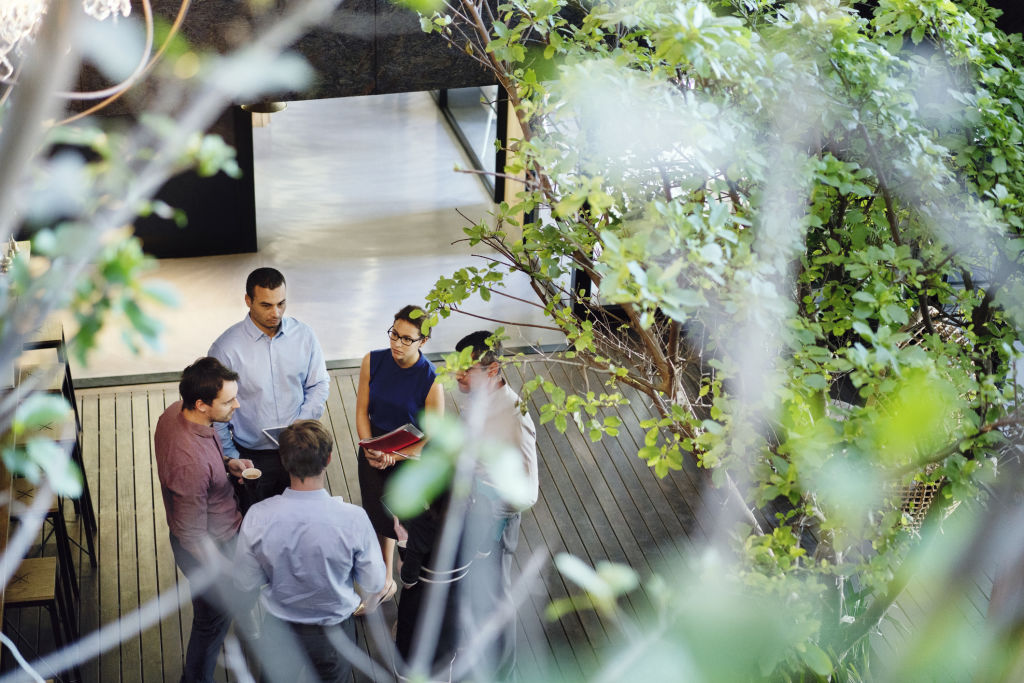Air quality and ventilation are fast becoming top priorities for office tenants in the wake of the COVID-19 pandemic.
Landlords and employers trying hard to encourage workers to commute to the office are only too aware of the importance of healthy air systems, says Nick Adams, associate principal at engineering consultancy firm Arup.
“Employers are using lots of different mechanisms to bring staff back to the office and out of their homes, and air quality is one of those key features so it is something we’re seeing accelerating,” he says.
“We’re seeing it built into a lot of tenants’ briefs for new space or, if they’re looking to renew their lease, then that’s part of the requirement around indoor air quality.
“So there’s a drive within the market, predominantly by tenants, to have better quality spaces.”
Air quality and ventilation in offices are measured by three rating systems: WELL, NABERS (National Australian Built Environment Rating System) and Green Star.
Tenants are increasingly asking for ventilation systems that achieve well beyond minimum standards in these rating systems and it’s more than a temporary post-COVID reaction, Adams says.
“COVID has shone a light on the importance of indoor air quality for staff wellbeing, staff satisfaction,” he says.
“In the past, sustainability has focused on energy and water. But now, in terms of the leasing space, the importance of the environment and its contribution to staff enjoyment and sense of wellbeing is here to stay.
“I think there’s an expectation that good air quality will be a provision of a good quality space.”
The latest technology in ventilation systems includes UV sterilisation, which kills bacteria and viruses in air-handling units. Cutting-edge systems can also continuously pump in fresh air while simultaneously exhausting stale air to ensure workplaces maintain healthy standards.
Increased demand for such systems comes with growing awareness of airborne diseases, which was heightened during the pandemic, and unsafe air qualities, as experienced during the 2020 bushfires when smoke blanketed many towns and cities.
Protective air-conditioning and ventilation systems that optimise health and productivity are now considered the norm across Australia’s office landscape, says Shaun Kenafake, national director of building consultancy, project and development services at Cushman & Wakefield.
“A lot of corporates are looking at wellness standards and there are certain wellness and health criteria that incorporate indoor air quality,” he says.
“International corporates are viewing it as part of their preferred destination to basically encourage staff attendance and improve productivity, reduce lost time and things like that due to physical and mental illness.”
Measuring the efficacy of air-ventilation systems is now a critical tool for tenants who want to prove their wellness standards to staff returning to the office, Kenafake says.
“More people are becoming aware of the measurement of air quality and the data behind the air quality, whether it’s humidity, CO2 levels or the temperature within the space,” he says.
“So I think that’s going to be in play, especially with the bigger corporates because they’ll want to demonstrate to their staff that they’re in well-ventilated spaces with superior air quality.
“It will also be a selling point to say the air quality is probably better than what you would get outside.”
Some landlords are approaching the issue differently with the integration of outdoor areas within their offices.
At the newly built Docklands complex Melbourne Quarter, workers can choose to take a break, or their laptops, to an elevated garden where they will find high-speed public Wi-Fi, power outlets and USB charging points.
Bringing the outdoors indoors is part of a worldwide architectural trend known as biophilia, in which plants are used to add natural air filtration to a building and lower its carbon emissions.
The push for more innovative air quality improvements is ramping up. With Australians spending 90 per cent of their time indoors, according to the Australian Institute of Refrigeration, Air Conditioning and Heating (AIRAH), scientists and authorities are pushing for better standards.
Queensland University of Technology air-quality expert Professor Lidia Morawska is among a global group of almost 40 researchers calling for a shift in standards in ventilation requirements, similar to the clean water supplies and centralised sewage systems introduced in the 1800s.
In its 2022 budget submission, AIRAH called on the federal government for more credible public information on the airborne transmission of COVID-19 and the importance of indoor air quality.
Standards Australia has also confirmed it is reviewing the use of air-conditioning and ventilation in buildings with the Australian Building Codes Board.
Seventeen organisations are being consulted in the review, including the Property Council of Australia, AIRAH and Engineers Australia.
